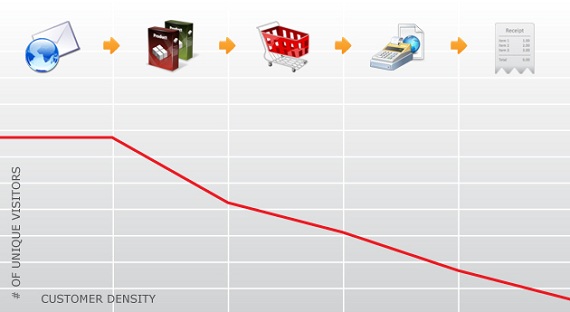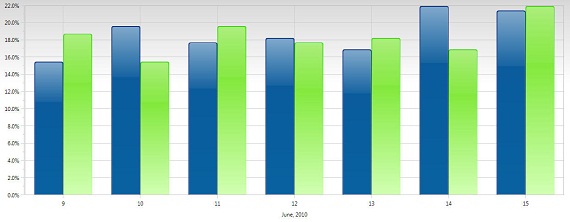Conversion rates for shopping carts are a frequent topic of conversation within the ecommerce industry. Digital products are no different and conversion rates are an important part of measuring the success of any ecommerce site. However, focusing too much on conversion rates, especially compared to industry peers, can distract from the real issues involved with closing sales.
If you have a conversion rate of 20 percent, are you doing well? What about 5 percent? In some cases, 20 percent is good. In other cases, 5 percent is really good. It all depends on what your definition of conversion rate is – and how qualified the traffic is to begin with.

As ecommerce industry veterans, we typically define conversion rate as “the number of customers who complete a purchase divided by the total number of customers who enter the checkout process.” In that case, if there were 5,000 customers in the checkout and 500 sales, that is a 10 percent conversion rate.
However, If we instead calculate the conversion rate as the number of customers who visit the website divided into the total number of sales, you can expect your conversion rate to be dramatically different (i.e. lower). If you have those same 500 sales, but had 500,000 website visits, that would be a 0.1 percent conversion rate. Quite a difference, yet nothing has changed with respect to the revenue generated.
Also, conversion rates fluctuate more often than you might think. In the following graphic, the conversion rate for one software company is compared week to week. Blue bars represent the current week, green bars represent the previous week. As you can see, the conversion rate can vary by more than 20 percent from day to day.

Another important point to make regarding conversion rates is that the quality of the traffic entering the beginning of the funnel makes a difference in conversion rate comparisons. Traffic from a PPC campaign targeting a specific keyword with a targeted landing page will see a higher conversion rate than random traffic reaching the home page of a website because users were targeted and led to an appropriate page. Similarly for shopping cart conversion rates, if customers have the opportunity to make decisions at the beginning of the process, it trims down broad traffic into real buyers – and has a huge impact on conversion rates!
Determined customers that reach the cart are more likely to purchase as opposed to someone who sees a “Buy Now” button and clicks it to see what is next. Random “Buy Now” button clicks result in many people leaving the cart process without purchasing although they likely would have never turned into customers in any scenario. Filtering out these random “Buy Now” clicks by inserting additional steps, may help you achieve an increased conversion rate, but at the risk of overall revenue.
Now, with all of this in mind, how relevant is a comparison between your conversion rate and another company’s rate? Don’t let conversion rate comparisons get you down or give you a false sense of security.
Keystone
It is important to establish YOUR OWN customer conversion rate baseline, start by defining the start and end points for your conversion rate calculations, then attempt to improve, rather than focusing on the actual number against the industry, which is in our opinion, is rather meaningless.
Great article, Craig.
Segmentation is very important as is measuring and improving on micro conversions, after all, only a small percentage of visitors have come to your site with the intent of making a purchase.
-E
Thanks Eugene!
Exactly right. So if some companies have a larger or smaller percentage of natural traffic that was inclined to purchase before visiting, how can you honestly compare your conversion rate to them?
cheers,
craig.
Segmentation! Absolutely. Most of us have a complex enough business that looking at a single, aggregate conversion rate (“ours is 25%, what’s yours?”) is not going to be meaningful.
I’d also add that number of conversions per visit is not always the best measure of success. We tend to look revenue per visit as well, especially when it comes to testing & optimization.
For example, if we introduce a new cross-sell in the shopping cart, we may turn off some prospective buyers (thereby lowering our conversion rate) but also improve our AOV from people who do stick around (thereby raising our revenue per visit). Only by looking at both metrics can we say whether the change was worthwhile.
Hi Dave,
I think that your point about revenue per visit in combination with number of conversions per visit is right on. We are preparing an analytics post so stay tuned and let us know your thoughts on that one as well.
craig.